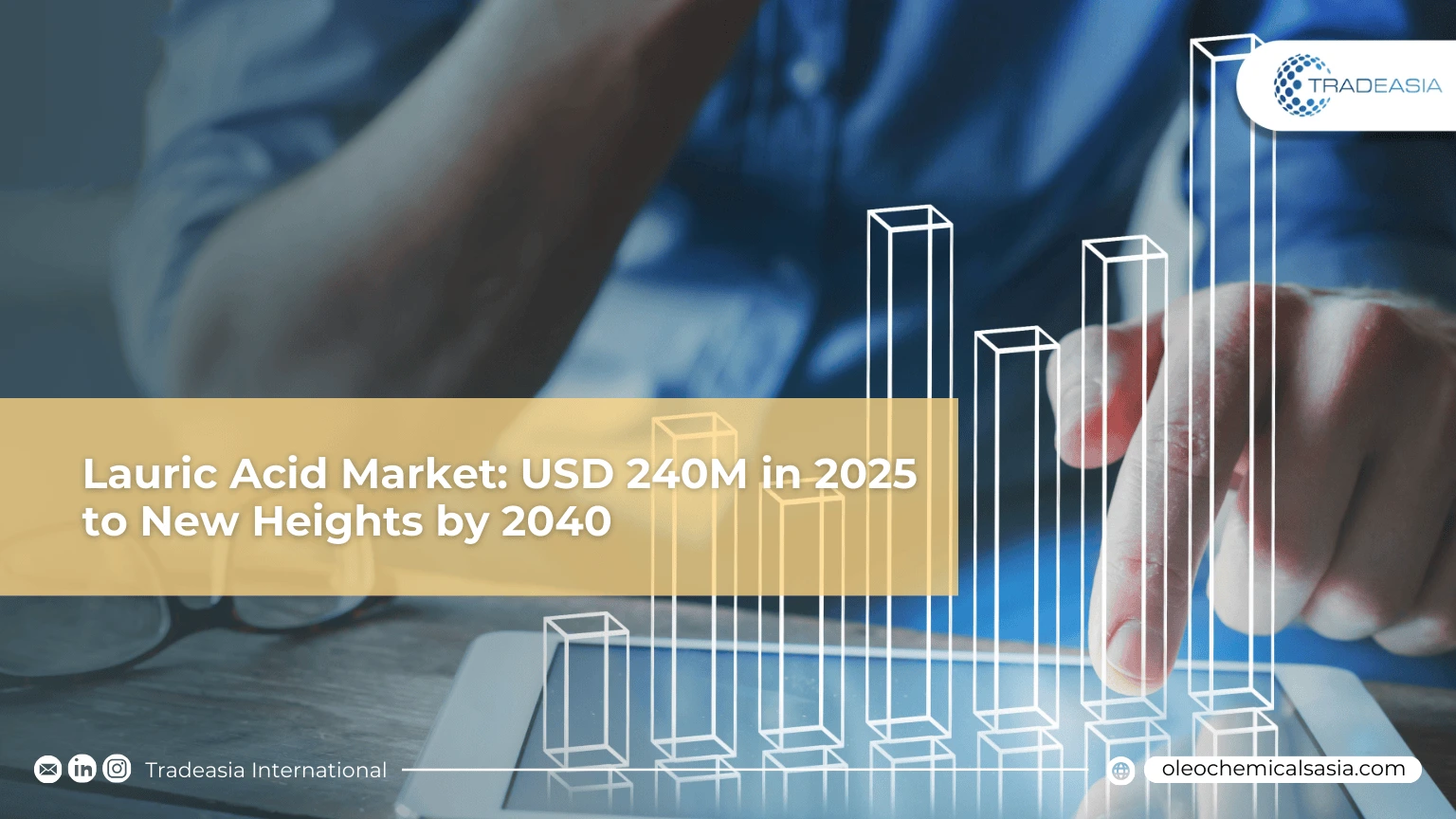The global lauric acid market is on a remarkable growth path, projected to expand from USD 240.8 million in 2025 to USD 846.7 million by 2035, marking an impressive CAGR of 13.4%. This strong trajectory extends toward 2040, with sustained demand across industries and a solid foundation in Asia-Pacific’s production capacity. As businesses explore opportunities in this dynamic sector, supply chain resilience and access to reliable partners become essential. Companies like Tradeasia International, with its global palm and oleochemical network, are strategically positioned to support this expansion. As one industry leader notes, “Strength in oleochemicals comes not only from production but also from the reliability of supply, something Tradeasia continues to reinforce in the palm-based value chain.”
Numbers That Drive the Market Forward
The journey from USD 240.8 million in 2025 to nearly USD 850 million by 2035 reflects a market powered by versatile applications. Lauric acid plays a central role in cosmetics and personal care, where its antimicrobial and surfactant properties fuel demand in skincare, soaps, and hair products. The food sector leverages it as an emulsifier and preservative, while detergents and industrial applications rely on its bio-based surfactant profile as industries shift away from petroleum-based chemicals.
Regional leadership lies firmly in Asia-Pacific, which commands over 40% of global market share in 2024. This dominance is anchored in the abundant supply of palm kernel and coconut oils from countries such as Indonesia, Malaysia, and China. Rising disposable incomes and growing health awareness in these markets are accelerating consumption, particularly in personal care. Combined with ongoing investments in oleochemicals innovation, Asia-Pacific is expected to remain the heartbeat of the global supply chain through 2040.
Opportunities, Challenges, and the Path Ahead
The demand surge is driven by consumer interest in organic skincare, health supplements, and bio-based detergents. This trend reflects a wider pivot toward sustainability, offering businesses significant opportunities to innovate and expand. However, risks persist. The market remains exposed to price volatility, geopolitical uncertainties, and supply chain disruptions tied to raw material availability. Dependence on agricultural inputs like palm kernel oil means that climate variability and production shifts could create headwinds.
Despite these challenges, the overall outlook is highly promising. With strong CAGR projections, expanding end-use applications, and Asia-Pacific’s commanding role, the lauric acid market is positioned for long-term growth. Success will hinge on strategic investment in sustainable sourcing, efficient logistics, and innovative product development. For businesses looking to navigate this evolving landscape, building strong partnerships across the palm and oleochemical ecosystem will be the key to capturing future value.
Sources:
-
Future Market Insights report on Lauric Acid Market - https://www.futuremarketinsights.com/reports/lauric-acid-market
-
Persistence Market Research on Lauric Acid Market - https://www.persistencemarketresearch.com/market-research/lauric-acid-market.asp
-
Oleochemicals Asia official website - https://www.oleochemicalsasia.com/

Leave a Comment